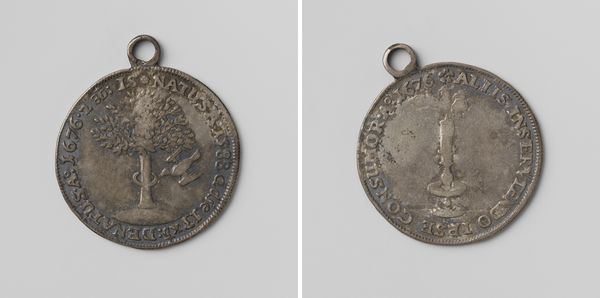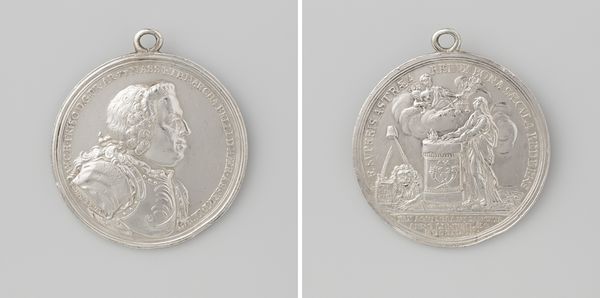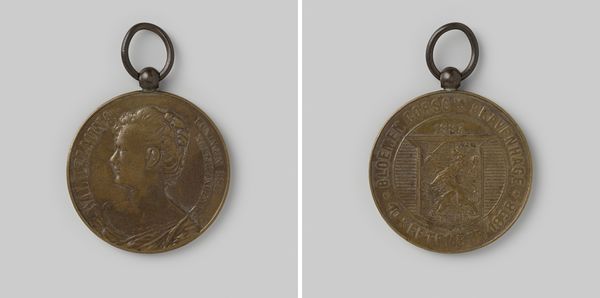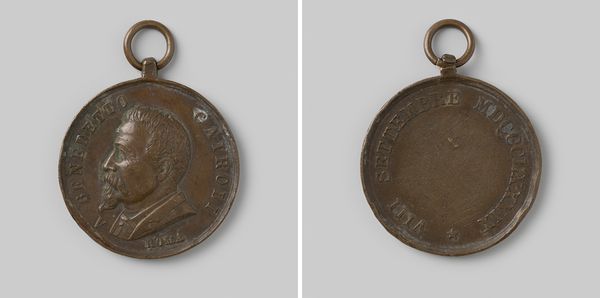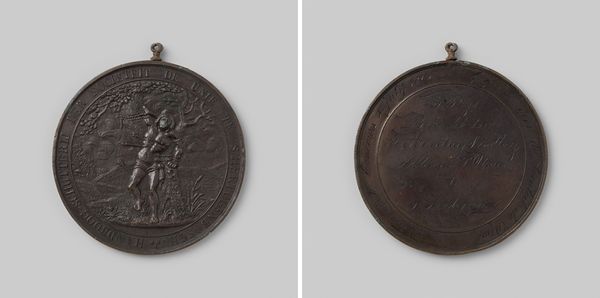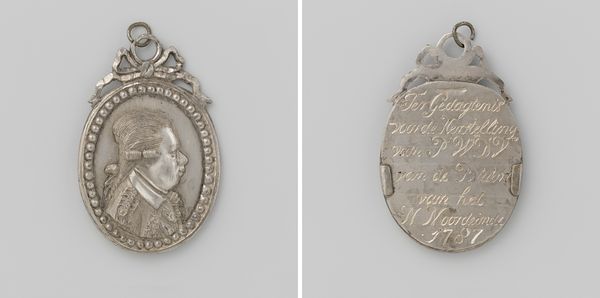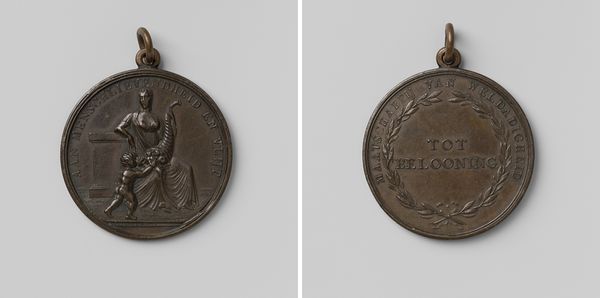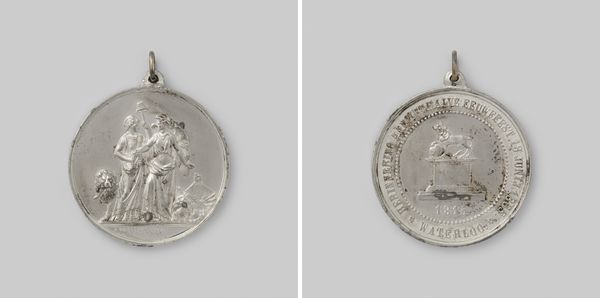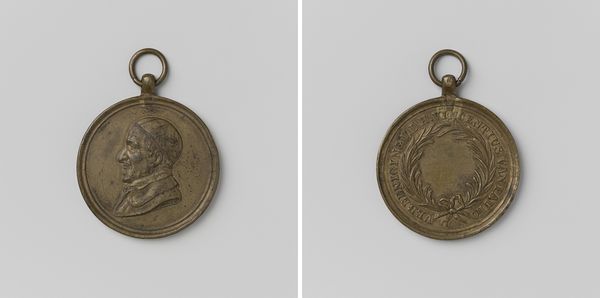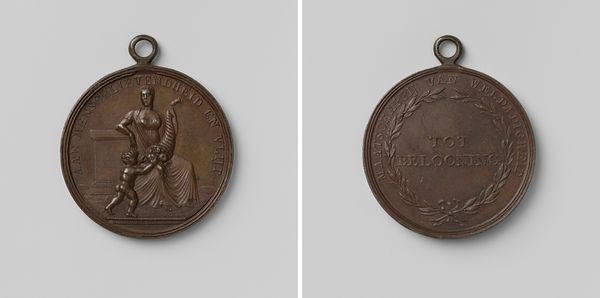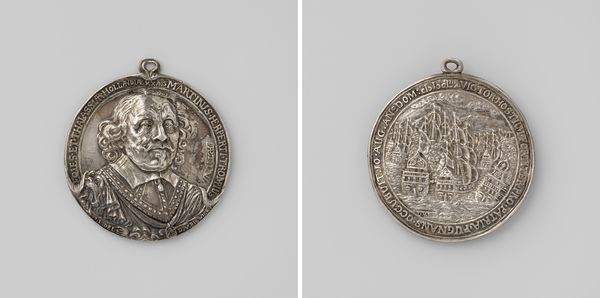
Wijding van de nieuwe kerk te Marimont aan de heilige Maagd door Maria Elisabeth, landvoogdes der zuidelijke Nederlanden 1740
0:00
0:00
metal, relief, sculpture
#
portrait
#
baroque
#
metal
#
relief
#
sculpture
#
history-painting
Dimensions: diameter 4.3 cm, diameter 3.4 cm, weight 12.38 gr
Copyright: Rijks Museum: Open Domain
Curator: This is a medal from around 1740 by Jacques Roettiers, commemorating the consecration of the new church at Mariemont by Maria Elisabeth, Governor of the Southern Netherlands. Editor: It’s fascinating to see this moment captured in metal. There's such intricate detail despite the likely small scale of the original. I'm drawn to the rendering of architectural forms. Curator: Indeed. Roettiers’s choice of metal speaks volumes. Its inherent value emphasizes the power dynamics at play – religious authority sanctioned by noble patronage, solidifying their social legitimacy through displays of material generosity. Consider the labour: How were these medals distributed and what impact might these tokens of affiliation have on its beholders? Editor: Right, so it's not just a piece of art; it’s an object embedded in networks of production, circulation, and reception. The very act of minting and distributing such items indicates an understanding of a broad societal impact that gestures of devotion like these could represent. Curator: Precisely. The iconography also plays a crucial role, linking Maria Elisabeth directly to the Virgin Mary through the dedication of the church. This reinforces the notion of female leadership as divinely sanctioned. Note the inscription: "To the Divine Mother, devoutly received into Heaven". It underscores that these historical portrayals are embedded in intersectional histories of religion, gender and class. Editor: The medal seems to operate as a visual contract. The very labor embedded in the work - the casting, engraving, and distribution, are the literal means of expressing a deeply devotional narrative. This speaks to how art is essentially work manifest into devotion and remembrance. Curator: Absolutely. The act of bestowing these objects becomes part of the historical record, marking how power utilizes materials and labour to perpetuate its existence. Editor: I find myself appreciating it even more now, recognizing its multiple layers of meaning and its grounding in material and social history. Curator: Seeing art this way invites us to actively think about our present relationship to history, representation, and authority, encouraging critical engagement beyond the artwork itself.
Comments
No comments
Be the first to comment and join the conversation on the ultimate creative platform.
